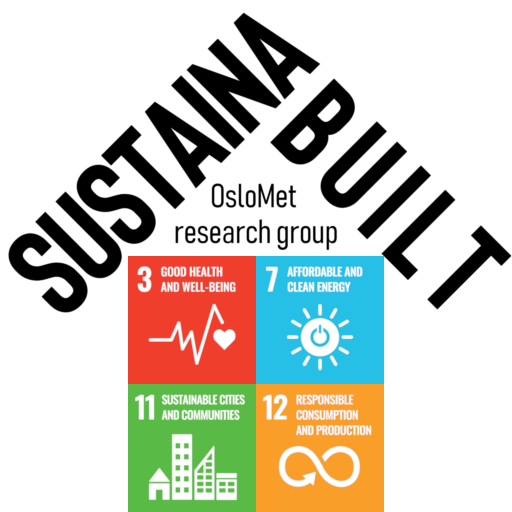Faculty Dissemination (Professional and Public Outreach)
2020 ▲▼
Anders Benteson NYGAARD, Colin CHARNOCK, Roger MEISAL (2020) “A preliminary study on the potential of Nanopore MinION and Illumina MiSeq 16S rRNA gene sequencing to characterize building-dust microbiomes”🔓. Scientific Reports …
Abstract: There is a growing awareness of the importance of indoor microbiomes for human health. Given their complexity, these microbiomes can only be adequately surveyed using high throughput sequencing techniques. Oxford Nanopore’s MinION is the newest third generation sequencing technology on the market. With its many advantages such as portability, user friendliness, simplicity, speed of sequencing and long read length, the technology is now an actual contender to established sequencing platforms. MinION’s main disadvantage is a relatively low read accuracy compared to several other platforms, although this is constantly improving. The present study, which appears to be the first of its kind, provides the results of a preliminary analysis of the microbial communities in indoor environments based on 16S rRNA gene amplicon sequencing, using both the Oxford Nanopore Technologies (ONT) MinIOn and the Illumina MiSeq DNA sequencers. At the level of family and above, there was no significant difference between the microbial compositions as revealed by the two platforms. However, at the genus, and particularly at the species level, the ONT MinION reported greater taxonomic resolution than Illumina MiSeq.
Permalink: https://doi.org/10.1038/s41598-020-59771-0
Peter G. SCHILD (2020) “RatFun-Regression”🔓. [Software] …
Abstract: Fast and accurate single-parameter symbolic regression by rational function regression (Padé approximants and reciprocal Padé approximants)
Peter G. SCHILD (2020) “PearsonPlot”🔓. [Software] …
Abstract: A tool to investigate statistical distribution of univariate observations. Plots skewness and kurtosis (together with bootsrapped observations) on a Pearson diagram, and compares to common statsitical distributions.
Peter G. SCHILD (2020) “NSPEK-3031_TilleggK”🔓. [Software] …
Abstract: Simulation of hourly heat pump performance with with the bilinear interpolation of capacity, COP and part load factors in accordance with EN 13612-2, EN 14825, and SN NSPEK 3031:2020.
Peter G. SCHILD (2020) “Time-Series-Explorer”🔓. [Software] …
Abstract: Tool to synchronize, interpolate gaps, analyze and plot any time-series data for multiple parameters, e.g. logged data from BEMS (Building Energy Management Systems) with sub-hourly logging. Includes options for correction for daylight saving time, user-definable date formats, basic statistics (e.g. weighted mean and median values), and carpet plot.
Peter G. SCHILD (2020) “FluidProps”🔓. [Software] …
Abstract: Visual Basic source code for thermophysical fluid properties: Psychrometrics, Gases, Water, Antifreeze coolants, Refrigerants, Pipe/duct flow friction
Permalink: https://doi.org/10.5281/zenodo.10370491
Peter G. SCHILD (2020) “EpXL: EnergyPlus Excel”🔓. [Software] …
Abstract: EnergyPlus™ Microsoft Excel user-interface, enabling import/export of both .epJSON and .IDF data files, parametric analysis and optimization. Selected for GitHub’s \”Arctic Code Vault\”
Permalink: https://doi.org/10.5281/zenodo.3249089
Peter G. SCHILD (2020) “Smart Buildings – Energy & Indoor Climate”. Lecture at Inaugural meeting of OsloMets «Smart Cities» programme in Radisson Blu, Oslo, 2020-09-10
Abstract not available
Peter G. SCHILD (2020) “Luftbåren smitte og tiltak knyttet til ventilasjonsanlegg: Om utfordringer ved ventilasjonsanlegg og andre smitteveier” [Language NB]. Lecture at FM-konferansen in Episenter Oslo, og livestreaming, 2020-10-15
Abstract not available
Peter G. SCHILD (2020) “Stordata i eiendomsdrift” [Language NB]. Talk at Frokostmøte: Spare penger og energi med stordata? in Zoom, 2020-11-12
Abstract not available
Rebecca ALLEN, Hallvard LAVOLL (2020) “What is Carbon Storage?”🔓. Viten og snakkis podcast interview, publ. on OsloMets website, 2020-09-22 …
Abstract: It makes sense to clean up after yourself, says Associate Professor Rebecca Allen in this episode. Carbon capture and storage (CCS) can be an important solution to reach our goals in the Paris agreement. Rebecca Allen from Canada has done research on CCS. In this episode you will get a good explanation on how we can store carbon and why Norway is special within this field.
Dimitrios KRANIOTIS (2020) “Moisture buffering in modern timber constructions”. Lecture at AIVC Series of Webinars ‘Urban Home Ventilation’ – Part 3: Moisture control, 2020-05-19
Abstract not available
Rebecca ALLEN (2020) “Norsk teknologi kan redde verden” [Language NB]. Dagbladet, p.32-33
Abstract not available
